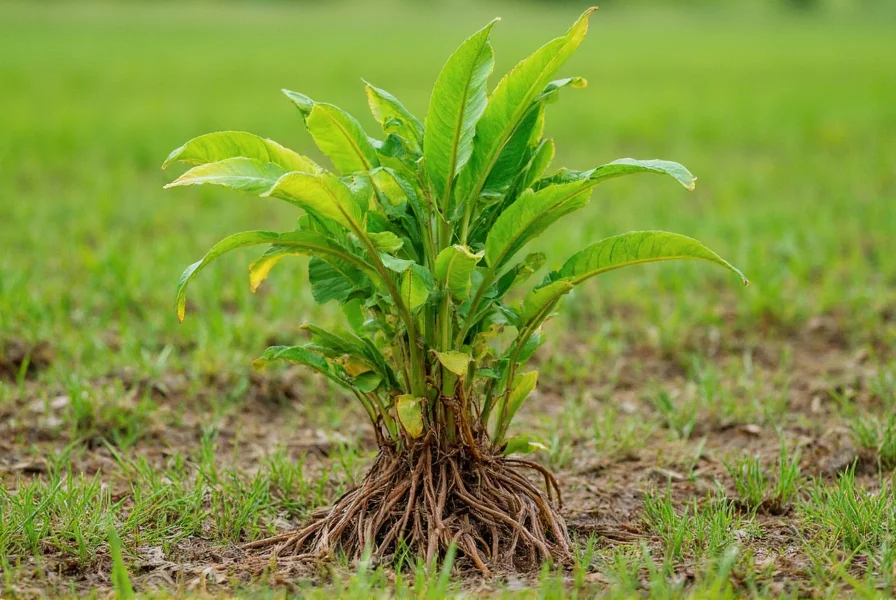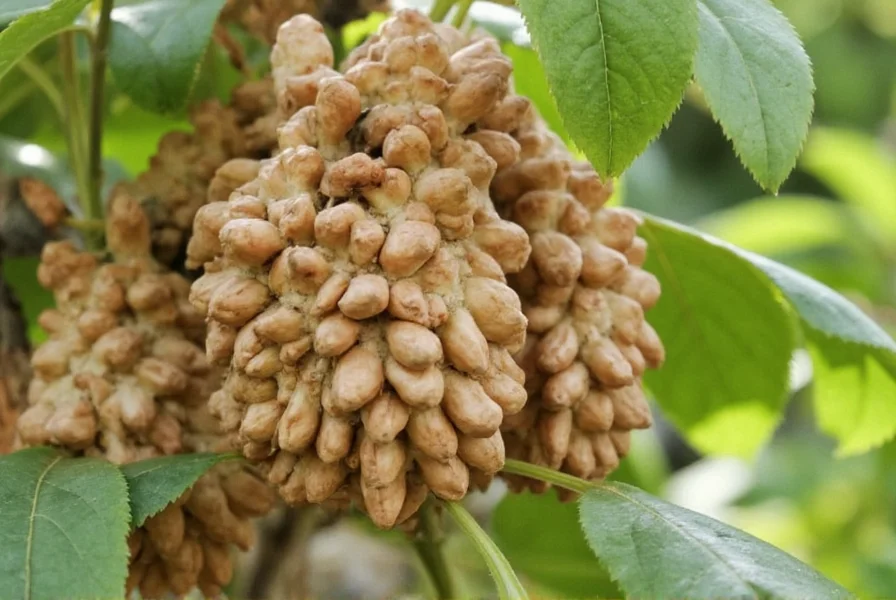Ginger has been cultivated for thousands of years across tropical regions, becoming one of the world's most valuable spice crops. This versatile rhizome isn't actually a root but an underground stem that stores nutrients for the ginger plant. Understanding where ginger grows helps explain why certain regions dominate global production and what conditions are necessary for successful cultivation.
The Ginger Plant: A Botanical Overview
Ginger (Zingiber officinale) belongs to the Zingiberaceae family, which includes turmeric and cardamom. The part we commonly use is the rhizome—a horizontal underground stem that produces roots and shoots. Unlike true roots, rhizomes store nutrients and allow the plant to survive unfavorable conditions. Ginger plants typically grow 2-3 feet tall with narrow green leaves and yellow-green flowers, though commercial cultivation focuses on the valuable rhizomes rather than ornamental features.
Ideal Climate Conditions for Ginger Growth
Ginger thrives in specific environmental conditions that mimic its native Southeast Asian habitat. The optimal temperature range for ginger cultivation is 77-86°F (25-30°C), with high humidity levels between 70-80%. The plant requires 30-50 inches (750-1250 mm) of annual rainfall, preferably distributed evenly throughout the growing season. While ginger needs consistent moisture, it cannot tolerate waterlogged conditions, which explains why proper drainage is critical for successful cultivation.
Ginger cannot withstand frost and grows best in regions with distinct wet and dry seasons. The plant typically requires 8-10 months of warm, humid conditions to reach maturity. In areas with seasonal variations, ginger is usually planted at the beginning of the rainy season and harvested just before the dry season begins.
Major Ginger-Producing Countries Worldwide
Global ginger production is concentrated in specific regions that provide the ideal combination of climate, soil, and agricultural expertise. The following table shows the top ginger-producing countries and their approximate annual output:
| Country | Annual Production (Metric Tons) | Key Growing Regions |
|---|---|---|
| India | 500,000 | Kerala, Karnataka, Odisha, Northeastern states |
| China | 350,000 | Yunnan, Guangdong, Sichuan provinces |
| Nepal | 120,000 | Chitwan, Morang, Sunsari districts |
| Nigeria | 100,000 | Plateau, Kaduna, Taraba states |
| Thailand | 80,000 | Chiang Mai, Chiang Rai, Tak provinces |
Asia: The Heart of Ginger Cultivation
Asia dominates global ginger production, accounting for approximately 70% of the world's supply. India stands as the largest producer, with the southern state of Kerala being particularly famous for its high-quality ginger. Indian ginger varieties like Cochin and Alleppey are prized for their strong flavor and high essential oil content. China follows closely, with production concentrated in southern provinces where the climate remains warm and humid year-round. Southeast Asian countries like Thailand, Indonesia, and Vietnam also contribute significantly to global ginger supplies, with each region developing distinctive varieties suited to local conditions.
Africa's Growing Ginger Industry
Africa has emerged as a major ginger-producing region, with Nigeria leading the continent's output. Nigerian ginger, particularly from the Jos Plateau region, is known for its pale color and mild flavor, making it popular for processing and export. Other significant African producers include Cameroon, Sierra Leone, and Kenya, where ginger farming has become an important cash crop for smallholder farmers. African ginger production has been increasing steadily as global demand rises and farmers recognize the crop's profitability compared to traditional staples.
The Americas: Niche Ginger Production
While not major global players, several countries in the Americas cultivate ginger for both domestic consumption and export. Jamaica and Haiti produce distinctive varieties with unique flavor profiles, while Brazil and Peru have expanded ginger cultivation in recent years. In the United States, ginger is primarily grown in Hawaii and parts of Florida and California, though production remains limited due to climate constraints and higher labor costs compared to tropical countries.
Soil Requirements for Successful Ginger Cultivation
Ginger grows best in well-drained, loamy soils rich in organic matter. The ideal soil pH ranges from 5.5 to 6.5—slightly acidic conditions that help prevent rhizome diseases. Heavy clay soils should be avoided as they retain too much moisture, while sandy soils often lack sufficient nutrients and moisture retention.
Before planting, farmers typically amend the soil with substantial amounts of organic matter like compost or well-rotted manure. This improves soil structure, increases water retention in sandy soils, and enhances drainage in heavier soils. Ginger benefits from soils with high potassium content, which supports rhizome development. Many commercial growers use raised beds to ensure proper drainage, especially in regions with heavy rainfall.
Ginger Farming Practices Around the World
Successful ginger cultivation follows specific agricultural practices that vary slightly by region but share common elements. Farmers typically plant ginger using "seed rhizomes"—pieces of mature ginger rhizomes with at least one live bud. Planting occurs at the beginning of the rainy season, with rhizomes placed 2-6 inches deep and spaced 8-12 inches apart in rows.
During the growing season, ginger requires regular weeding and occasional hilling (mounding soil around the base of plants) to encourage rhizome development. Many farmers intercrop ginger with taller plants like bananas or coffee that provide the partial shade ginger prefers. Organic mulch is commonly applied to maintain soil moisture and temperature. Ginger is typically harvested 8-10 months after planting, when the leaves begin to yellow and dry.
Can You Grow Ginger at Home?
Many gardening enthusiasts wonder if they can grow ginger outside traditional tropical regions. The answer is yes, with some adaptations. In temperate climates, ginger can be grown as an annual crop during warm months or as a container plant brought indoors during colder seasons. Gardeners in cooler regions often start ginger indoors 2-4 weeks before the last frost date, then transplant outdoors when temperatures consistently exceed 60°F (15°C).
For home cultivation, select fresh ginger rhizomes from the grocery store (organic is preferable as conventional ginger may be treated to prevent sprouting). Soak the rhizome in water overnight, then plant in a large container with well-draining potting mix, keeping the soil consistently moist but not waterlogged. Place the container in a warm spot with indirect sunlight. While homegrown ginger may be smaller than commercially produced varieties, it offers the satisfaction of harvesting your own fresh spice.
Challenges in Ginger Cultivation
Ginger farming faces several challenges that affect where ginger grows successfully. The plant is susceptible to various fungal diseases like rhizome rot and bacterial wilt, particularly in poorly drained soils. Nematodes and insects such as shoot borers can also damage crops. Climate change poses additional challenges, with unpredictable rainfall patterns and extreme weather events affecting traditional growing regions.
Many ginger-growing regions are addressing these challenges through improved agricultural practices, disease-resistant varieties, and sustainable farming methods. Some farmers are adopting organic cultivation techniques to meet growing market demand for pesticide-free ginger. Research institutions worldwide continue to develop new ginger varieties with improved disease resistance and adaptability to changing climate conditions.

Conclusion
Ginger's cultivation is intrinsically linked to tropical and subtropical environments that provide the warmth, humidity, and soil conditions this valuable spice requires. From India's lush southern states to Nigeria's fertile plateaus, ginger thrives in regions where farmers have perfected cultivation techniques over generations. Understanding where ginger grows helps explain its global distribution, flavor variations between regions, and why certain areas dominate production. Whether you're a consumer curious about your spice's origin or a gardener considering home cultivation, recognizing ginger's environmental needs provides valuable context for appreciating this ancient and versatile plant.
What climate conditions are essential for ginger to grow successfully?
Ginger requires warm, humid tropical or subtropical conditions with temperatures between 77-86°F (25-30°C). It needs high humidity (70-80%), 30-50 inches of annual rainfall, and protection from direct sunlight. The plant cannot tolerate frost and requires 8-10 months of warm conditions to reach maturity. Regions with distinct wet and dry seasons are ideal, with planting typically occurring at the beginning of the rainy season.
Can ginger be grown in temperate climates?
Yes, ginger can be grown in temperate climates with some adaptations. Gardeners typically grow it as an annual during warm months or in containers that can be moved indoors during colder seasons. Start ginger indoors 2-4 weeks before the last frost, then transplant outdoors when temperatures consistently exceed 60°F (15°C). Container growing with well-draining soil and partial shade provides the best chance for success in non-tropical regions.
Which countries are the largest producers of ginger globally?
India is the world's largest ginger producer, accounting for approximately 35% of global supply, with major cultivation in Kerala, Karnataka, and northeastern states. China follows as the second-largest producer, primarily in southern provinces like Yunnan and Guangdong. Other significant producers include Nepal, Nigeria, Thailand, Indonesia, and Bangladesh. Africa's production, led by Nigeria, has been growing steadily in recent years.
What type of soil is best for growing ginger?
Ginger grows best in well-drained, loamy soils rich in organic matter with a slightly acidic pH of 5.5-6.5. The soil should retain moisture without becoming waterlogged, as ginger rhizomes are susceptible to rot in poorly drained conditions. Many successful ginger farmers use raised beds and amend the soil with substantial amounts of compost or well-rotted manure to improve soil structure and nutrient content before planting.
How long does it take for ginger to grow from planting to harvest?
Ginger typically requires 8-10 months to reach maturity from planting to harvest. The exact timeframe depends on the variety and growing conditions. Farmers usually plant ginger at the beginning of the rainy season and harvest when the leaves begin to yellow and dry, indicating the rhizomes have fully developed. Some varieties may be harvested earlier for "green ginger," while others are left longer for more mature, fibrous rhizomes used for drying and powdering.











 浙公网安备
33010002000092号
浙公网安备
33010002000092号 浙B2-20120091-4
浙B2-20120091-4